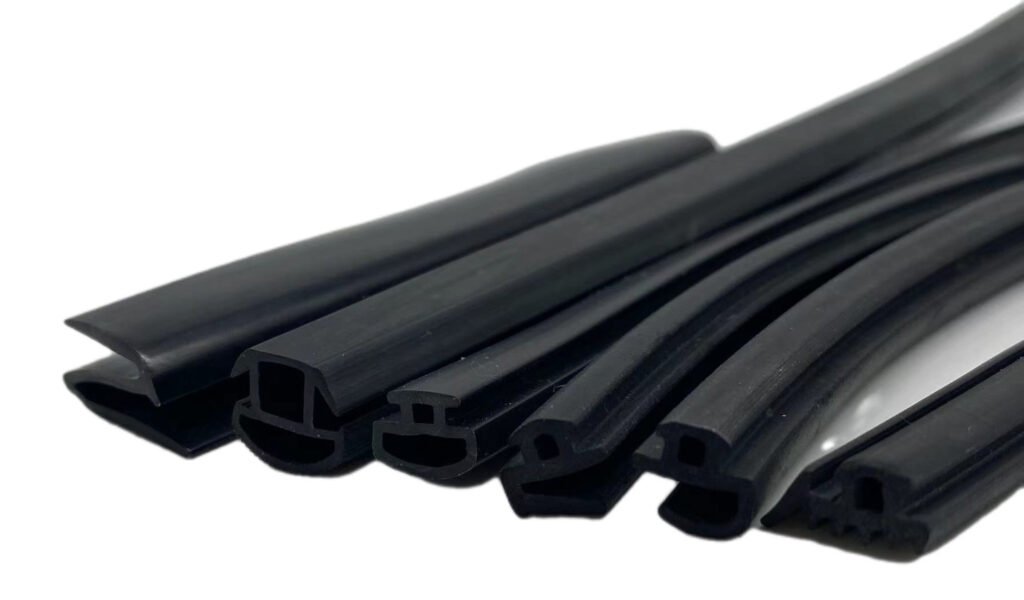When you think of rubber gaskets, you probably picture them as being circular and flat. While it is true that most manufacturers produce rubber gaskets in these shapes, there are several different types of rubber gaskets available on the market. Each type comes with its unique properties and uses; understanding what each kind is used for can help you make the right choice when purchasing this product. These variations come down to three primary factors: type of material, thickness, and special properties. Each type offers a different set of properties that makes it unique for specific applications. This article will explain what these properties mean when it comes to rubber gasket materials and how they can impact your project.
What is a Rubber Gasket?
A gasket is any material that is designed to seal two parts together. Rubber is a popular choice for gaskets because it is easy to work with and can be used to seal many different materials together. Gaskets can be used to seal things like valves, pipes, windows, door aluminum and other machinery. They can also be used to prevent liquids from leaking from large containers. Rubber gaskets can also be found in many cars, boats, windows and doors and other machinery. The gaskets in these areas are to prevent air, liquids and other materials from leaking and causing problems, and also to mute the sound and insulate the land from mosquitoes.
Natural Rubber Gaskets
Natural rubber gaskets are made from 100% rubber. They are one of the most common types of gaskets and are used in a wide range of products. This type of rubber gasket is very flexible and can be used to seal a wide range of materials together. It is also airtight and resistant to chemicals. Natural rubber gaskets are not as strong as some other types of rubber gaskets. They are not as resistant to chemicals and are less heat resistant as well. Natural rubber gaskets are a good choice for low-pressure environments. They can be used to seal things like pipes and valves and can be used in the medical and food industries. Natural rubber gaskets are also easy to work with and are expensive.
Synthetic Rubber Gaskets
Synthetic rubber gaskets are made from synthetic materials. there is also another name EPDM. These gaskets are resistant to chemicals and can be used in harsh environments. Unlike natural rubber gaskets, synthetic rubber gaskets are also heat resistant. This makes them a popular choice for high-pressure environments. Synthetic rubber gaskets are more durable than natural rubber gaskets. They are stronger, can handle higher levels of pressure, and can last longer. Synthetic rubber gaskets are ideal for high-pressure and high-temperature applications. They can be used in engines, large machinery, and in construction projects. Temperature use is -30℃~120℃ and is inexpensive.
Silicone Rubber Gaskets
Silicone rubber gaskets are made from silicone materials. The silicone used in these gaskets can be either synthetic or natural. The silicone in silicone rubber gaskets is resistant to chemicals and can be used in harsh environments. Silicone rubber gaskets are also very flexible. They can be used to seal a wide range of materials together and are more durable than natural rubber gaskets. In addition, silicone rubber gaskets are stronger than natural rubber gaskets and can handle higher levels of pressure. Silicone rubber gaskets cost more than natural rubber gaskets but are also more durable. They are a good choice for high-pressure environments and can be used in plumbing, construction, and automotive applications. Silicone rubber gaskets are not as easy to work with as natural rubber gaskets.
Neoprene Rubber Gaskets
Neoprene rubber gaskets are made from synthetic materials. The neoprene in neoprene rubber gaskets is resistant to chemicals and can be used in harsh environments. Neoprene rubber gaskets are also very flexible. They can be used to seal a wide range of materials together and are more durable than natural rubber gaskets. Neoprene rubber gaskets are also stronger than natural rubber gaskets and can handle higher levels of pressure. Neoprene rubber gaskets cost more than natural rubber gaskets but are also more durable. They are a good choice for high-pressure environments and can be used in plumbing, construction, and automotive applications. Neoprene rubber gaskets are not as easy to work with as natural rubber gaskets.
Epoxy Coated Rubber Gaskets
Epoxy-coated rubber gaskets are made from a combination of natural and synthetic rubber. They are coated with epoxy, a synthetic glue, which keeps them from sticking to other materials. Epoxy-coated rubber gaskets are resistant to chemicals and can be used in harsh environments. Epoxy-coated rubber gaskets are not as flexible as natural rubber gaskets. They can be used to seal a wide range of materials together and are stronger than natural rubber gaskets. In addition, epoxy-coated rubber gaskets are more durable than natural rubber gaskets. They are a good choice for high-pressure environments and can be used in plumbing, construction, and automotive applications. Epoxy-coated rubber gaskets are not easy to work with.
Graphite Coated Rubber Gaskets
Graphite-coated rubber gaskets are made from a combination of natural and synthetic rubber. They are coated with graphite, a synthetic material, which keeps them from sticking to other materials. Graphite-coated rubber gaskets are resistant to chemicals and can be used in harsh environments. Graphite-coated rubber gaskets are not as flexible as natural rubber gaskets. They can be used to seal a wide range of materials together and are stronger than natural rubber gaskets. In addition, graphite coated rubber gaskets are more durable than natural rubber gaskets. They are a good choice for high-pressure environments and can be used in plumbing, construction, and automotive applications. Graphite coated rubber gaskets are not easy to work with.
Conclusion
Choosing the right rubber gasket depends on the pressure, temperature, and the type of material you are trying to seal together. You can use the information above to determine which type of rubber gasket is best for your project. Make sure to read reviews and check customer feedback to find out which gaskets work best and which ones don’t live up to their claims.
Menu



